On 10 April 2021, the newest addition to the Paris region’s transport network opened: tramway T9, between the Porte de Choisy on the edge of Paris’s 13th arrondissement and the town of Orly. The new line is notable for a number of firsts; but the line’s opening also represents the return of trams to the D5 corridor across the département of Val-de-Marne after a 90-year hiatus. Let’s briefly explore this history before taking a look at the new trams, stations and rails.
An ancient route
The route has a long history. Almost perfectly straight, the road from Paris to Choisy-le-Roi appears to have been part of the ancient Roman road linking Lutetia (Paris) with Lugdunum (Lyon); it regained importance as a regional road when it was paved in 1750.
The first trams along the road began operating in 1875. Horse-drawn and able to run on normal roads when necessary, these vehicles were operated by the Compagnie des Tramways Sud, later the Compagnie Générale Parisienne des Tramways (CGPT), and ran between Châtelet and Choisy-le-Roi.
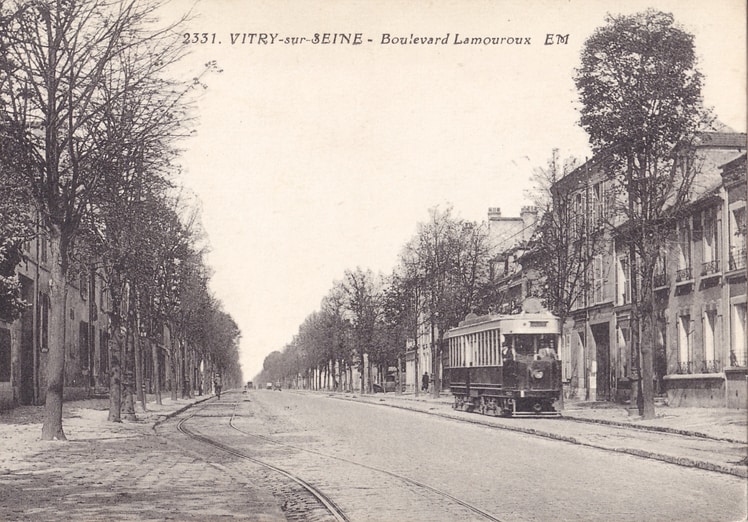
The line was electrified in the early 20th century, with overhead cables outside Paris and an underground channel within the city limits. A golden age was dawning for tramways in Île-de-France.
Unfortunately, this wouldn’t last. By the mid-1920s, trams were beginning to look rather passé when set against that great vehicle of freedom, the private car. Besides, diesel buses were more flexible, and could generally travel faster than trams. In 1933, the Paris–Choisy line disappeared; by 1938 the only trams left in the region would be in a local network in Versailles1. For more on that story, watch out for updates to this blog’s ongoing history of tramways in Île-de-France. The next instalment will drop in the next couple of weeks – sign up for email updates to Fabric of Paris if you don’t want to miss it.
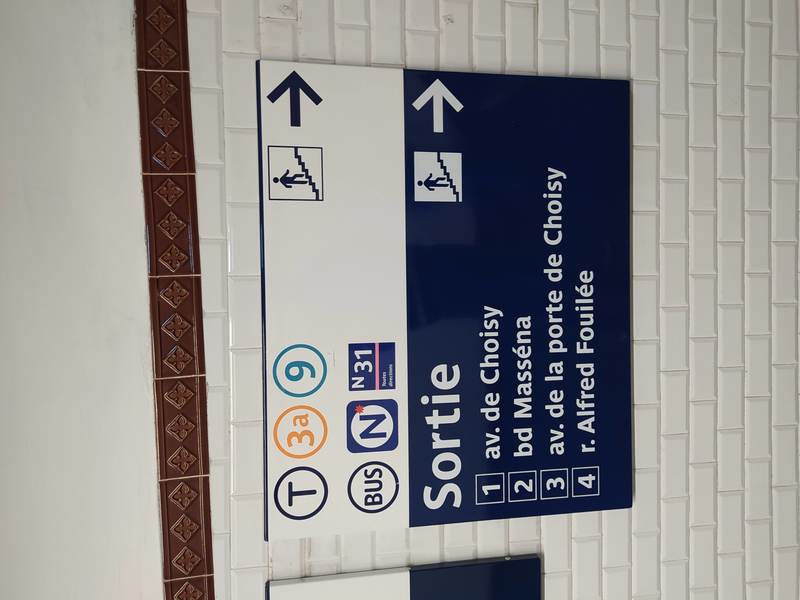
Upgrading the bus route
The rails might have disappeared, but a bus route stepped in to replace the tramway. The line even saw trolleybuses operating between 1950 and 1966. In 1983, some of RATP’s first articulated buses were deployed here, and in the mid-1980s, the road was transformed from two carriageways to three, with the central lanes reserved for buses. While not quite a BRT line, this did help make the service more reliable, and ridership continued to increase, bolstered by population growth2.
When I first moved to the region in 2014, I spent my first few weeks in Vitry-sur-Seine, along the route. When I first saw the dedicated bus lanes I was impressed; but actually riding the bus I found it to be overcrowded and, consequently, slow, with boarding and disembarking hampered by the crowds. Little did I know that a tramway was already on the cards here: preliminary studies had been voted in 2011, and in 2015 the line was confirmed. Building work started the following year.
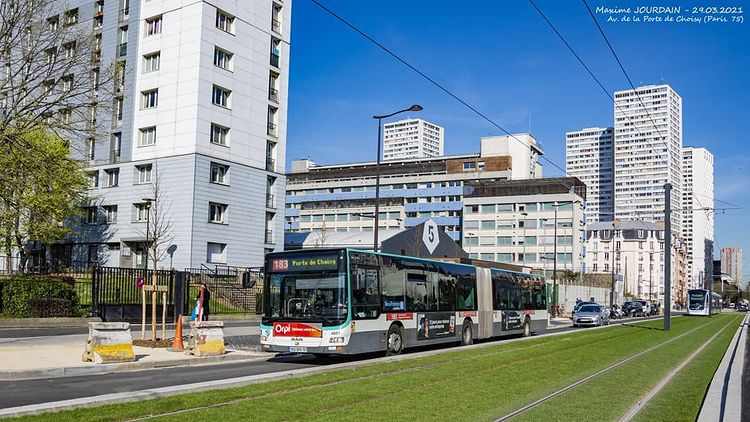
The modern tramway
In 1992, the first modern tramway opened in the Paris region, following in the footsteps of pioneers Nantes (1985) and Grenoble (1987) to implement a type of tramway quite different from the streetcars of old. The modern trams, entirely segregated and much longer than a single car, have been classified as “light rail” by some commentators. But we’ll dive more into this later in the series on the history of trams in the region.
Line 9 is the 11th line in the modern network to open. Its route deviates slightly from its most recent predecessor, the 183 bus: the latter terminated at Orly airport, whereas this ends in the centre of the town of the same name. For its part, the bus line will subsist, but operate along a much shorter route between the airport and the international food market at nearby Rungis. The bendy buses will be replaced by conventional vehicles.
Besides two tram-train lines, T9 is the first of the region’s modern tramways not operated by state-owned operator RATP. Instead, Paris-based multinational Keolis was awarded the contract in 2019. This is not to say that it’s entirely outside state hands: the SNCF, France’s national railway company, owns a majority of this company, with the other 30% in the hands of the Canadian state, via Quebec pension fund CDPQ. Keolis operates various transport networks in France and elsewhere, including London’s DLR and the tramways of Manchester and Melbourne.
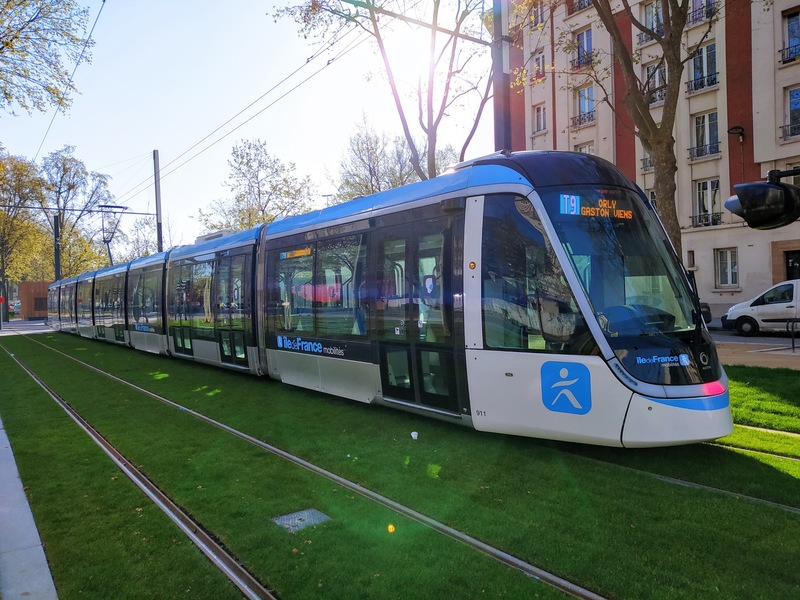
The line is also the first to be opened with the branding of regional transport authority Île-de-France Mobilités (IdFM). Where once Parisian transport vehicles were liveried in the colours of their operators, the IdFM brand identity, introduced in 2017, has been slowly gaining ground, with new and refurbished trains and buses sporting the blue, white and grey of the authority. This will be increasingly important to maintain coherence and legibility in the network in the coming years, as even the metro is destined to escape the monopoly of RATP, with contracts for new lines open to tender.
Another first for the line is claimed by the trams themselves. Like many other French cities, Paris has chosen Alstom’s Citadis range for the majority of its lines. T9 is no exception, but the newest fleet is the first of the family’s fifth generation. The main distinguishing feature is double doors along the entire length of the tram: previous models have these for most of the length, but single doors at either end.

The trams look great, both outside and in. On board, stylish green and red LED lights in the ceiling allow passengers to easily identify which side the doors will open. Like other trams in Paris – and unlike the metro and heavy rail networks – these low-floor vehicles are entirely accessible to wheelchair users. There are even USB charging ports, though this is arguably a curious choice for a line where the entire journey from terminus to terminus takes only 30 minutes.

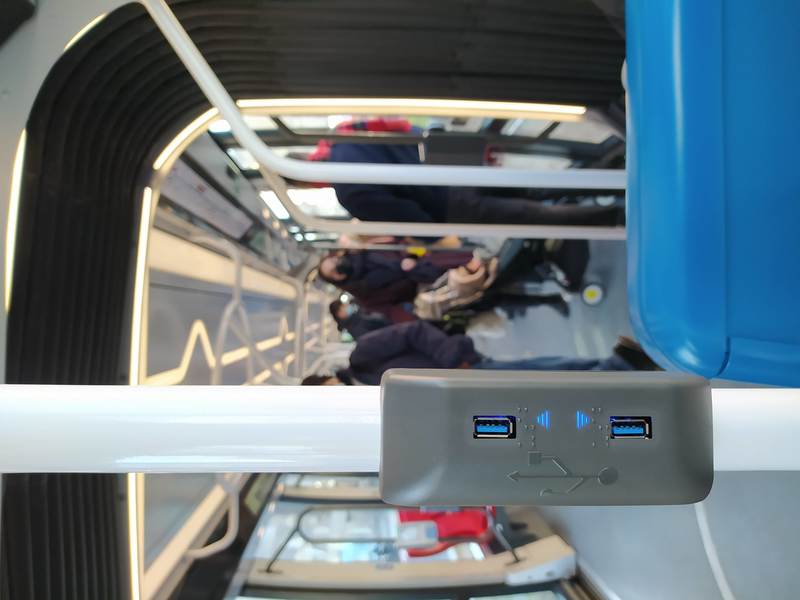
The infrastructure
One big advantage of trams over buses is that their dedicated lanes can be green: grass can be planted between the rails. This is the case for most tramways in France, and I’m happy to say that Paris’s T9 is no exception. The building work also provided the opportunity to improve the streets along which the trams run, with flowers lining the tramway and extra space created for cyclists and pedestrians.
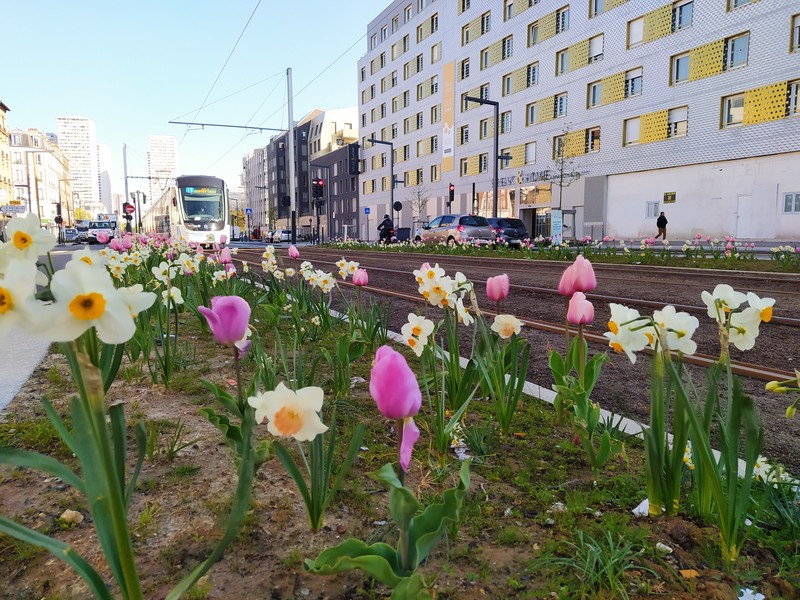
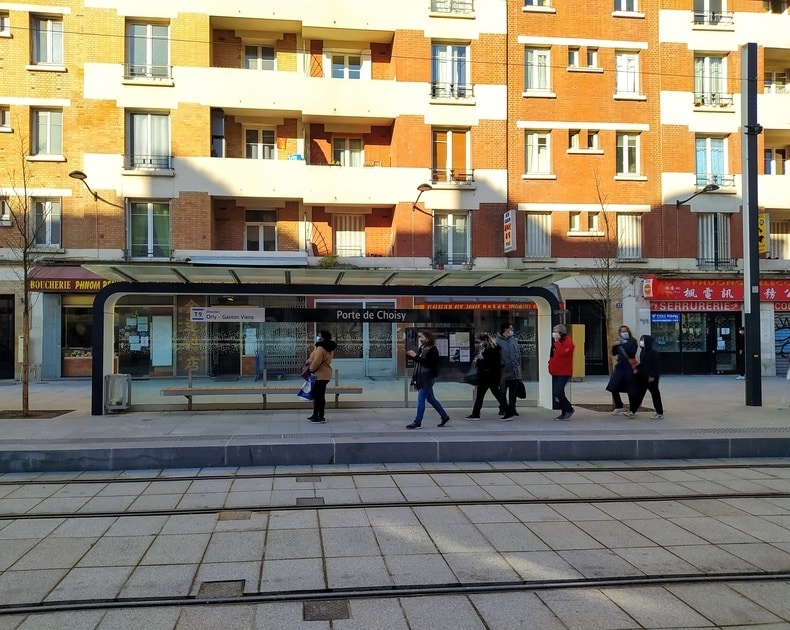
The stations look wonderful. The shelters are stylish and feature clear signage. There is, however, limited seating, and most of each platform is open to the elements.
9-metre signposts announce the stations, making them clearly visible. However, the IdFM logo is much more prominent on these masts than the tram symbol, so it’s not immediately clear from a distance that it’s a tram stop. Some other cities do a better job on this front: consider London’s coloured roundels, which immediately identify both transit authority TfL and the transport mode in question, or the distinctive lettering of Tyne and Wear’s Nexus, which achieves the same result.
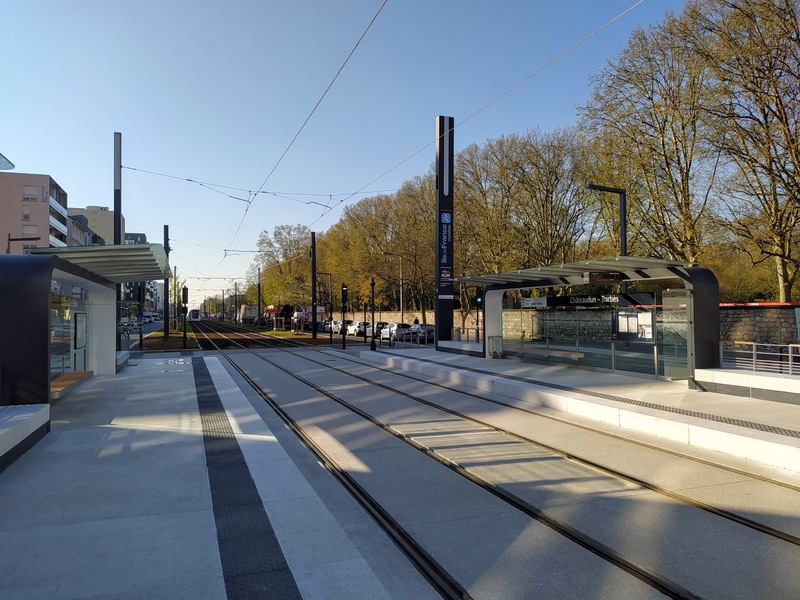
In fact, I would question the very design of IdFM’s tram logo, which I personally find much less clear than the older, simpler T in a circle; but that discussion is probably for another article. The masts feature the name of the line, but this is in tiny lettering that is only visible up close. Should T9 one day connect with other tramways, the stops would benefit from clearer signage identifying the lines from a distance.

Connections
Thus far, T9’s only connection with another tramway is at its northern terminus, where it links with tram 3a, the southern part of Paris’s orbital line. While its predecessor the 183 bus boasted cross-platform interchange with this line, the new transfer is very slightly less convenient, but still straightforward. At the same location, passengers can change to metro line 7’s Ivry branch. One significant improvement envisaged for the line would extend it to the Place d’Italie in the heart of the 13th arrondissement, where it would not only connect with two other metro lines (5 and 6), but also the trunk of line 7, where all trains call instead of only half.
Towards the southern end of the line, there is a connection with line C of the RER at Les Saules, as well as two stops within a ten-minute walk of other RER C stations. An extension from the town centre of Orly to the international airport a few kilometres away would greatly improve the line’s connections, allowing transfers to tramway T7 and, ultimately, to metro line 14, scheduled to arrive there in 2024. To reach the airport terminals, T9 would likely have to share some track with T7, which would require work as T7’s trams are narrower.
The Tvm, France’s first bus rapid transit line, is set to be upgraded in the near future. This might simply involve replacing the articulated buses with longer double-articulated vehicles, but a tramway hasn’t been excluded. So T9 could one day benefit from connections with three other tram lines.
If you’ve got this far, you must be interested in Paris’s tram network! If you haven’t read it yet, take a look at my history of tramways in Île-de-France. It’s still ongoing, so be sure to subscribe to email updates using the form below.
 Fabric of Paris
Fabric of Paris